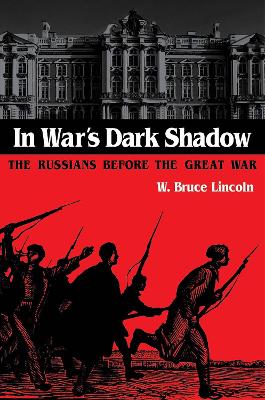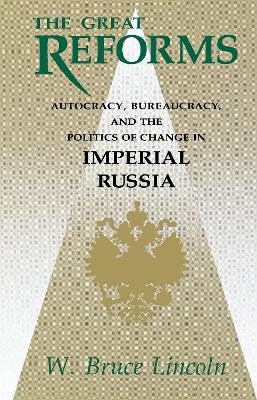NIU Series in Slavic, East European, and Eurasian Studies
4 total works
In the quarter century before World War I, change came to Russia at a dizzying pace. The industrial revolution, the building of the Trans-Siberian Railroad, the disastrous Russo-Japanese War, and the Revolution of 1905 drastically reshaped the lives of both the ruling classes and ordinary people. Imperial Russia was home to more than a hundred million men and women, but by the time Vladimir Lenin announced the Bolsheviks' revolutionary victory, one in three had either perished or fled in exile.
In War's Dark Shadow explores the lives, thoughts, and hopes of the Russian people as they entered the twentieth century.
The first decade of Alexander II's reign is known in Russian history as the Era of the Great Reforms, a time recognized as the major period of social, economic, and institutional transformation between the reign of Peter the Great and the Revolution of 1905. Coming directly after the notoriously repressive last decade of the Nicholas era, the appearance of such dramatic reform has led scholars to seek its causes in dramatic events. Surely some great, even cataclysmic, force must have driven Alexander II and his advisers to initiate what appears to be such an astonishing change in policy.
In their search for the origins of these Great Reforms, historians generally have focused upon two phenomena. The first of these was Russia's defeat in the Crimean War by a relatively small, ineptly commanded Allied expeditionary force. The second was the serf revolts, which increased dramatically in the 1850s. From these events, most historians have concluded that the economic failings of serfdom, the problem of preserving domestic peace, and the need to restore Russia's tarnished military prestige were the major forces that convinced Alexander II's government to embark upon a new reformist path.
As Lincoln's examination of the long-unstudied Russian archival evidence shows, there are good reasons to question whether such crises of policy and failings of Russia's servile economy impelled Alexander II and his advisers along a previously uncharted reformist path after the Crimean War. Further, in light of the Russian bureaucracy's slowness in drafting much less complex administrative reforms during the previous century, Lincoln argues that the Great Reform legislation simply was too complex and required too much sophisticated knowledge about the Empire's economic, administratvive, and judicial affairs to have been formulated in the brief half-decade after the war's end.
The Great Reforms of the 1860s marked the broadest attempt at social and economic renovation to occur in Russia between the death of Peter the Great in 1725 and the Revolution of 1905. In just more than a decade, imperial reform acts freed Russia's serfs, restructured her courts, established institutions of local self-government in parts of the empire, altered the constraints that censorship imposed on the press, and transformed Russia's vast serf armed forces into a citizen army in which men from all classes bore equal responsibility for military service.
This invaluable study explains why the legislation assumed the shape that it did and estimates what the Great Reforms ultimately accomplished. The Great Reforms offered readers a vital starting point from which to evaluate the prospects for glasnost', perestroika, and reform in the Gorbachev era.



